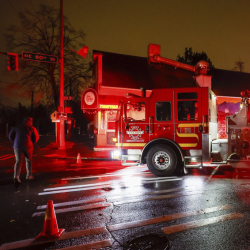For years, African American and Native American children have been overrepresented in Oregon's Child Welfare system. A new report says Black families are more likely to be reported for possible abuse, just as likely as White families for a complaint to be found valid, but much more likely to have their children removed from their homes. Those children are also kept away from their homes for a much longer period of time than White children, according to the report.
The report was made by Portland State University's Child Welfare Partnership and delivered to a meeting of Oregon Gov. Ted Kulongoski's Child Welfare Equity Task Force on Sept. 25. The task force was formed in January of 2009.
The study found that citizens made over 54,000 reports of possible child abuse or neglect on more than 33,000 families during the period of study. Many of these reports are mandated by state law for certain people such as nurses, doctors, social workers and teachers. Black and Native American families are two to three times as likely to be reported for suspected abuse than other families. As 20 percent of these families are "race unknown" those numbers could be even higher when taking into account mixed race households.
Once a report is received by child welfare, Black and White families are equally as likely to be referred for a full assessment by a social worker, and just as likely to be found to have a valid complaint, but that's where the similarities end.
Once the agency had determined that neglect or abuse occurred, Black children are more likely to be removed from the home – an act that causes a significant trauma for children, even in cases where parents are found to be neglectful or abusive, according to the report.
Black children are four times more likely to be referred to foster care. Only 18 percent of these children are sent to stay with relatives. Relative placement has been a high priority for Child Welfare, but relative placements remain low, even for White children (16 percent). The highest number of relative placements occurred for Native Americans.
Once children enter the foster care system, all children of color stayed in the system longer than White children. Only 65 percent of Black children entering the system were reunified with their parents, a percentage greater than White children (62 percent were reunited with their parents). Of the 35 percent of Blacks who remained in the system, only about 4 percent were adopted into guardianship. The rest aged out of the foster care system.
The authors of the report say the reasons behind these disparities are unknown with the current data.
"Focus Groups with those involved in each decision point (professionals and family/community members) will provide a context for the data, offering possible explanations for the mechanism behind the differences and, more importantly, suggestions for practices that might improve the equity of service delivery across the system," says the report.


















































































































































































































































































































































